Kake Udon is the most basic form of all udon noodle soup dishes. You can simply enjoy the texture of the udon noodles paired with a seasoned dashi broth. Master this recipe and take the first step on your udon journey.
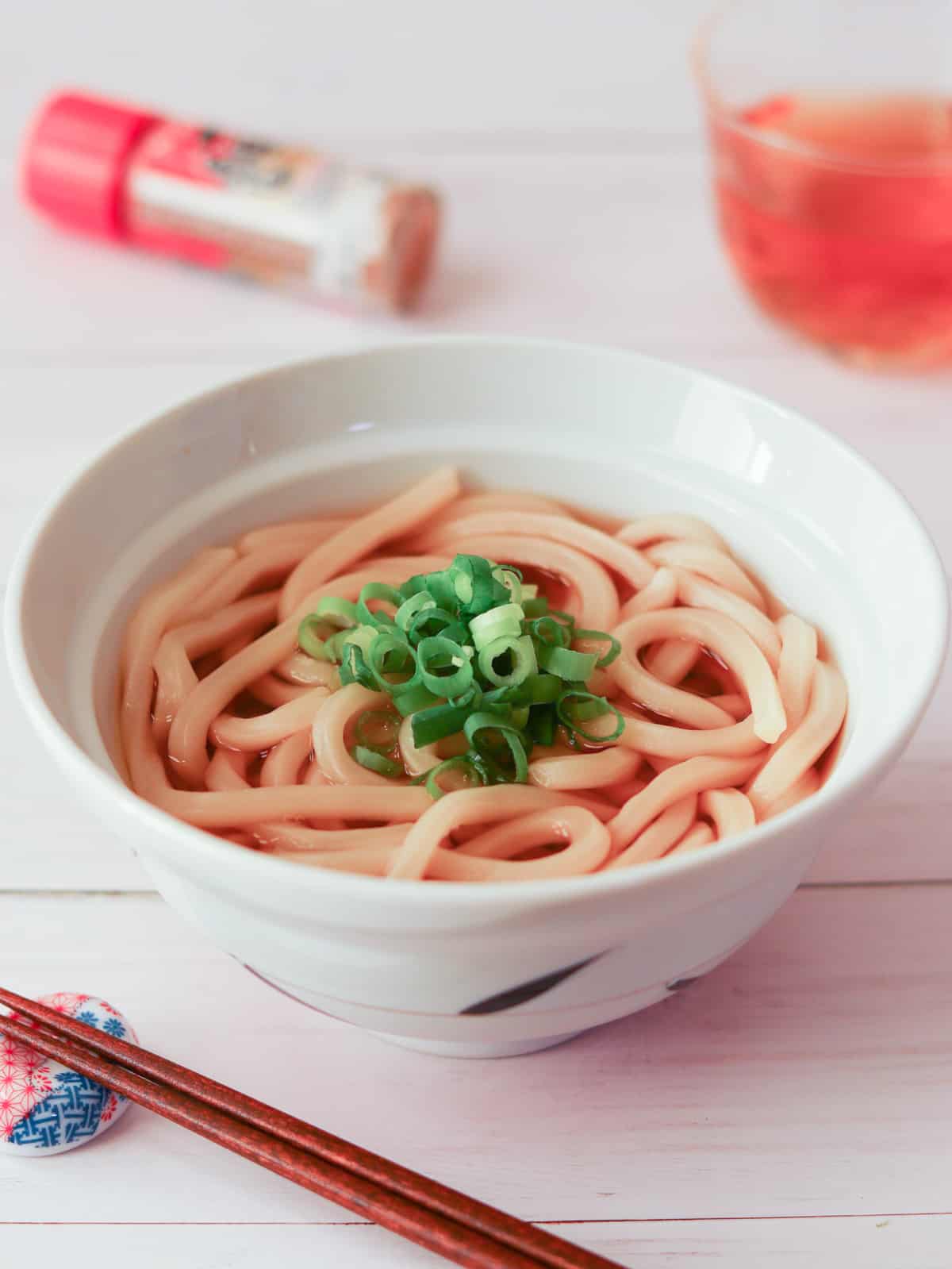
Jump to:
What are udon noodles anyway?
Udon noodles are a type of Japanese noodle made by kneading wheat flour with water and salt, then cutting the dough into thick or thin strips. Before eating, they need to be boiled (store-bought refrigerated, dried, and frozen udon noodles are already pre-boiled once). You can enjoy them as udon noodle soups with dashi broth or as stir-fried udon with protein and vegetables.
While there are various forms of udon noodles available, including fresh, dried, pre-cooked, and frozen, any of these can be used to make all types of udon dishes. Fresh udon noodles provide an authentic experience, while pre-cooked ones are convenient for quick preparation. Dried udon noodles excel in texture and shelf life, and frozen ones offer a balance of texture and convenience. Feel free to choose according to your preference.
So what is Kake Udon?
Kake Udon is a simple dish consisting of udon noodles in a hot, seasoned dashi broth with no additional ingredients (except for condiments). "Kake" means to pour over. Most udon noodle soup dishes are made by adding various ingredients to this base. For example, when topped with tempura, it becomes Tempura Udon, and putting inari age (seasoned fried tofu pouches) results in Kitsune Udon.
Therefore, if you are making udon noodle soup for the first time, I recommend starting with this dish. Even without additional ingredients, the flavor is delightful.
Types of udon noodles
Simply saying 'udon noodles' doesn't capture their essence, as there is a wide range of udon varieties that can't be summarized with just one term. There are various types, each with differences in thickness, mouthfeel, and texture. Examples include the thick and chewy 'Sanuki udon,' the thin and chewy 'Inaniwa udon,' the thick and soft 'Shiratama udon,' and the flat and wide 'Kishimen.'
The throat sensation and texture vary depending on the type of udon noodles you choose. For udon enthusiasts, I highly recommend exploring the wide variety available.
My top recommendation is definitely Sanuki udon. It offers a satisfying sensation in the mouth and a delightfully chewy texture. It is one of the most popular udon varieties in Japan.
Dashi broth for udon noodle soup
Dashi broth for udon noodle soup is usually made from kombu and bonito flakes (katsuobushi), and the preparation process is the same as that of other typical Japanese dishes, such as miso soup. However, to enhance the flavor, it is common to use a larger amount of bonito flakes. Using more bonito flakes results in a richer udon broth.
Alternatively, some people prepare dashi using kombu and dried shiitake mushrooms. This gives the broth a different flavor and makes it suitable for vegans. You can choose whichever style suits your taste.
If you want to learn more detailed information, please refer to the linked pages titled "How to Make Bonito Dashi" and "How to Make Shiitake Dashi."
Udon soup seasoning
The seasoning of udon soup varies primarily between the Kanto region in eastern Japan and the Kansai region in western Japan. In the Kanto region, a large amount of soy sauce is used, giving the soup a rich color and a strong, salty flavor. In contrast, the Kansai region uses a more flavorful dashi broth and less soy sauce, resulting in a lighter color and milder saltiness.
I live in Osaka, which is in the Kansai region, and since I prefer the Kansai-style seasoning, I would like to share a recipe for it with you here.
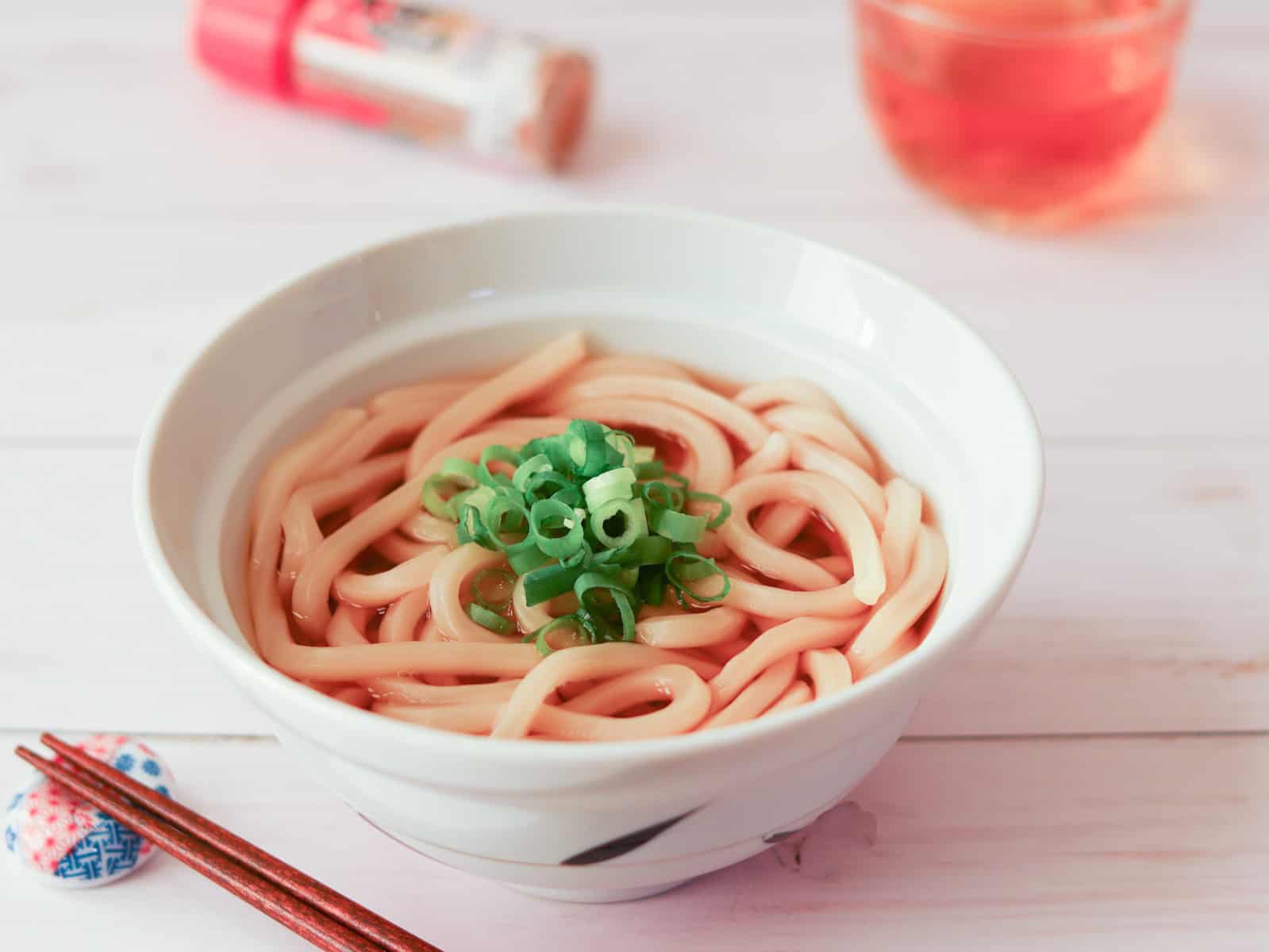
📋Step-by-step recipe
Ingredients
- 1 serving udon noodles (fresh, dried, pre-cooked, or frozen)
- 1 green onion / scallion
- ½ Tbsp mirin
- 1 ½ Tbsp light soy sauce (Regular soy sauce can be used as a substitute; the main difference is the color.)
Awase dashi (udon broth):
- 1 ½ cups water
- 0.13 oz kombu (dried kelp)
- ⅗ cup bonito flakes (katsuobushi)
Instructions
🕒 Total: 55 mins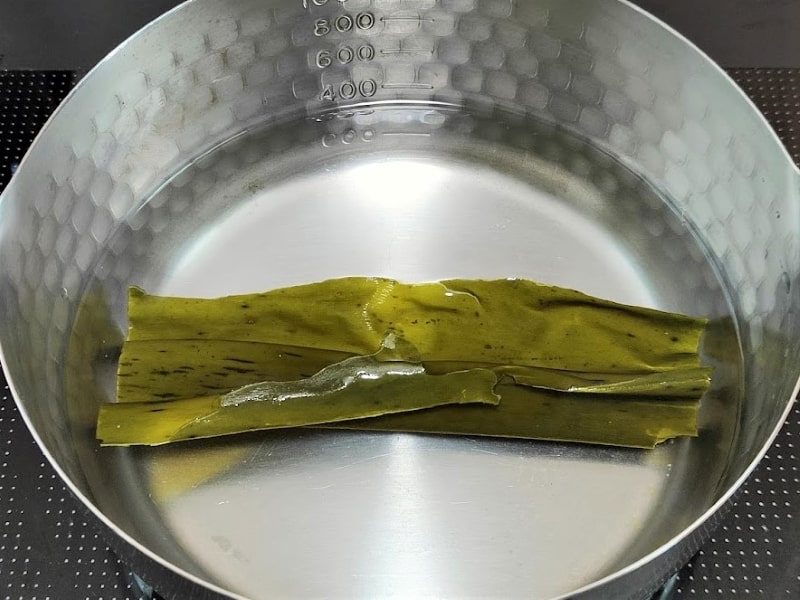
Step 1
Put water and kombu in a pot and let it sit for at least 30 minutes until the kombu softens.
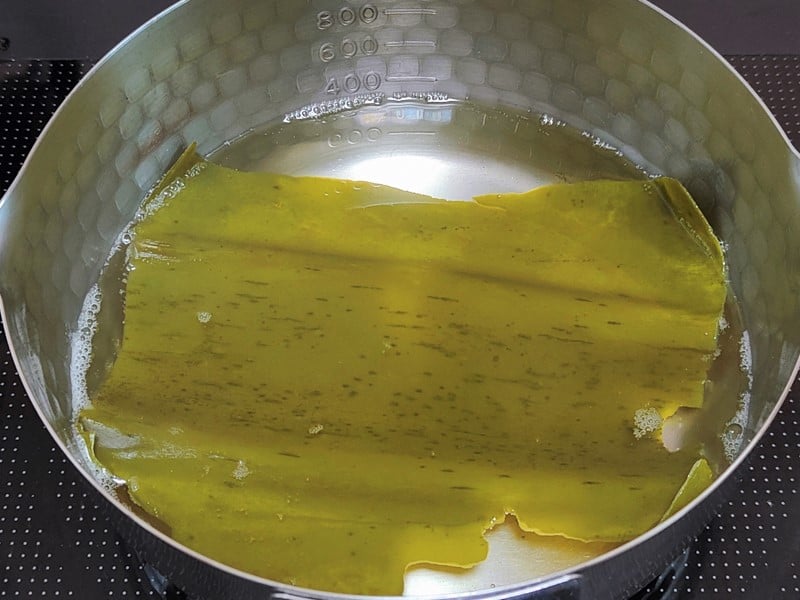
Step 2
Heat the pot over very low heat for about 10 minutes (for 2 servings). When small bubbles appear on the surface of the liquid, remove the kombu.
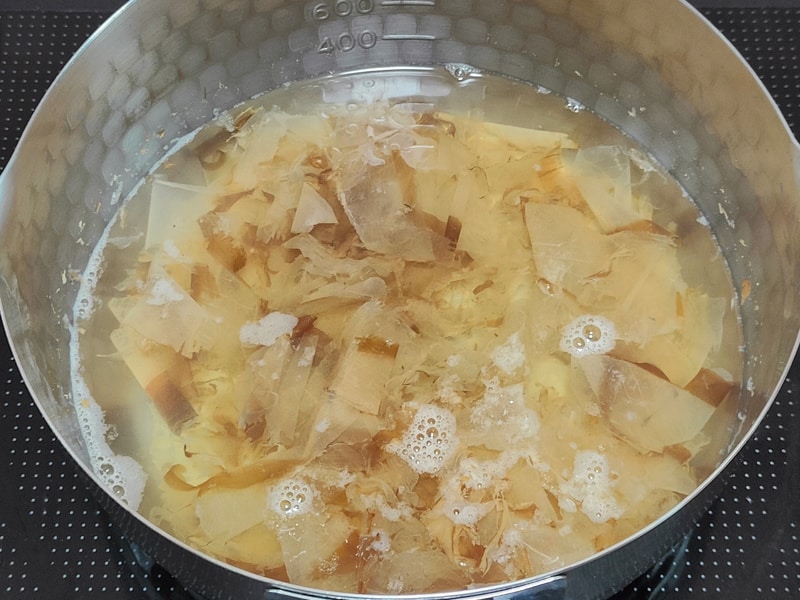
Step 3
Increase the heat and bring the water (kombu dashi) to a boil. Once boiling, reduce the heat to low, add bonito flakes, and let it simmer for 6 minutes.
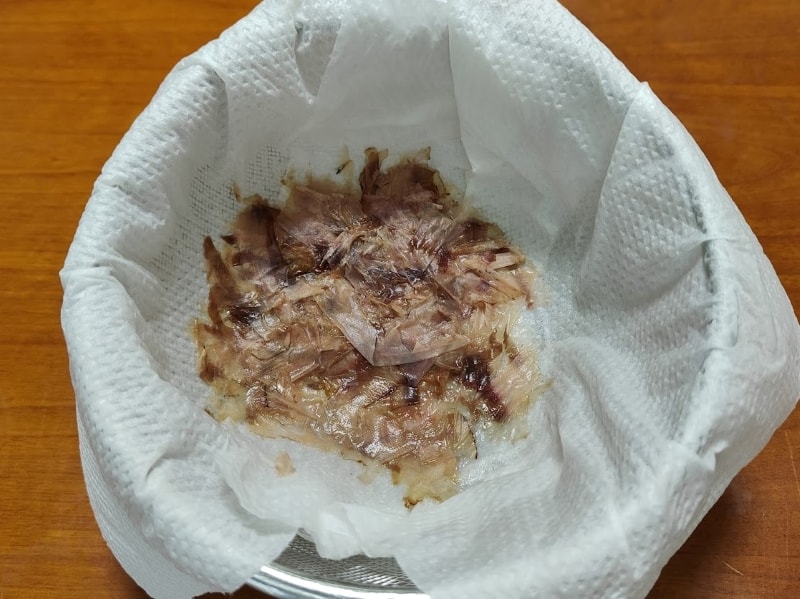
Step 4
Turn off the heat and strain the mixture through a sieve lined with paper towels or a cloth (such as cheesecloth). Alternatively, if you don't mind having some fine bonito flakes remaining, you can simply use a fine-mesh strainer. Awase dashi (udon broth), which combines kombu dashi and bonito dashi, is now ready.
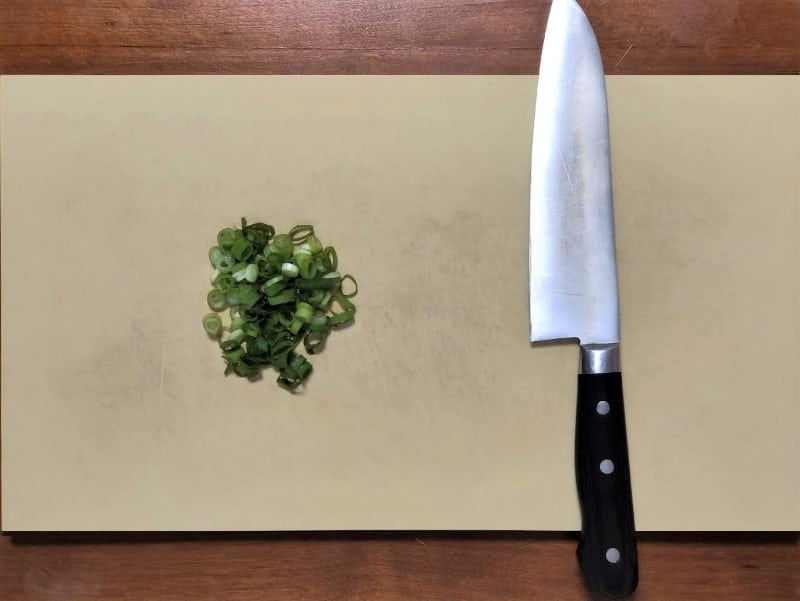
Step 5
Thinly slice green onion.
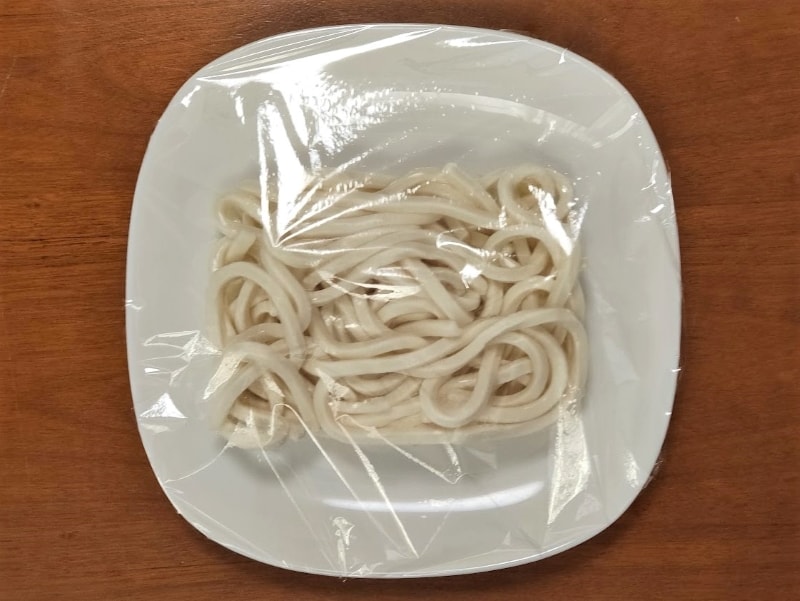
Step 6
If using fresh, dried, or pre-cooked udon noodles: Boil the udon noodles according to the package instructions. Once cooked, drain them in a colander.
If using frozen udon noodles: Lightly sprinkle water over the udon noodles. Then, place them on a microwave-safe plate, cover with plastic wrap, and microwave on medium power (500W) for about 4 minutes. You can also cook them by boiling, just like the other types of udon noodles.
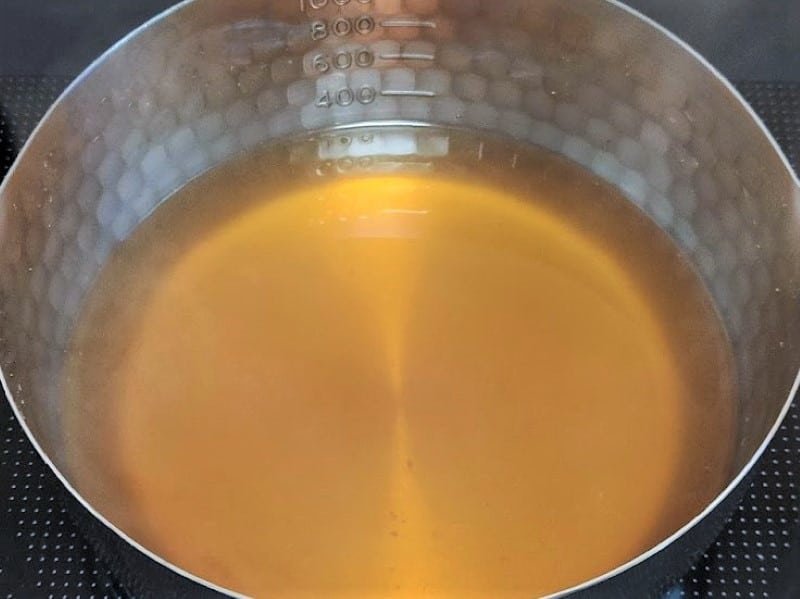
Step 7
Return the dashi to the pot, add mirin and light soy sauce, and bring it to a boil.
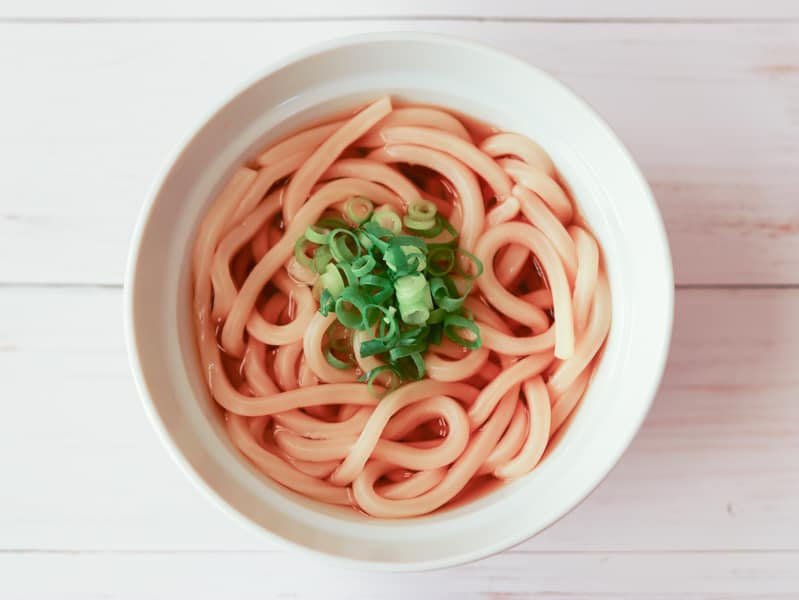
Step 8
Place the udon noodles in a bowl and pour the liquid mixture (udon soup) over them. Loosen the udon noodles with chopsticks and then top with the green onions.
To Store
You can store it in the refrigerator for up to 3 days. However, it is recommended to combine the udon noodles with the soup just before eating, as cooked udon noodles tend to lose their texture over time.
Recipe card
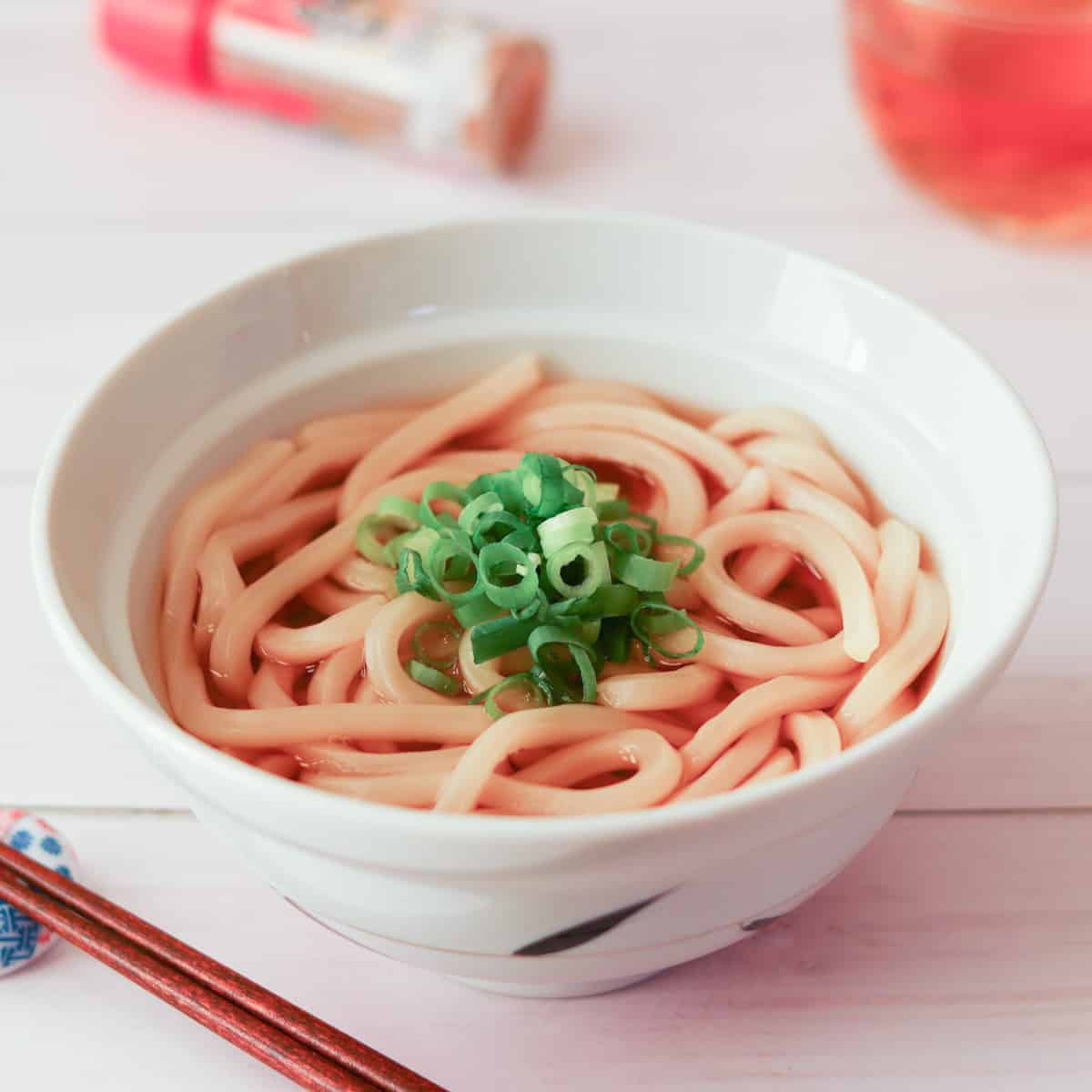
Kake Udon (Basic Udon Noodle Soup)
Ingredients
- 1 serving udon noodles (fresh, dried, pre-cooked, or frozen)
- 1 green onion / scallion
- ½ Tbsp mirin
- 1 ½ Tbsp light soy sauce (Regular soy sauce can be used as a substitute; the main difference is the color.)
Awase dashi (udon broth):
- 1 ½ cups water
- 0.13 oz kombu (dried kelp)
- ⅗ cup bonito flakes (katsuobushi)
Instructions
- Put water and kombu in a pot and let it sit for at least 30 minutes until the kombu softens.
- Heat the pot over very low heat for about 10 minutes (for 2 servings). When small bubbles appear on the surface of the liquid, remove the kombu.
- Increase the heat and bring the water (kombu dashi) to a boil. Once boiling, reduce the heat to low, add bonito flakes, and let it simmer for 6 minutes.
- Turn off the heat and strain the mixture through a sieve lined with paper towels or a cloth (such as cheesecloth). Alternatively, if you don't mind having some fine bonito flakes remaining, you can simply use a fine-mesh strainer. Awase dashi (udon broth), which combines kombu dashi and bonito dashi, is now ready.
- Thinly slice green onion.
- If using fresh, dried, or pre-cooked udon noodles: Boil the udon noodles according to the package instructions. Once cooked, drain them in a colander.If using frozen udon noodles: Lightly sprinkle water over the udon noodles. Then, place them on a microwave-safe plate, cover with plastic wrap, and microwave on medium power (500W) for about 4 minutes. You can also cook them by boiling, just like the other types of udon noodles.
- Return the dashi to the pot, add mirin and light soy sauce, and bring it to a boil.
- Place the udon noodles in a bowl and pour the liquid mixture (udon soup) over them. Loosen the udon noodles with chopsticks and then top with the green onions.
Notes
- You can store it in the refrigerator for up to 3 days. However, it is recommended to combine the udon noodles with the soup just before eating, as cooked udon noodles tend to lose their texture over time.

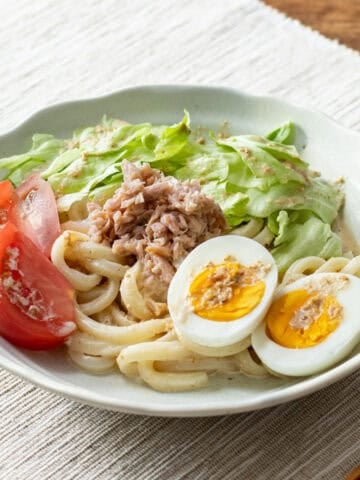
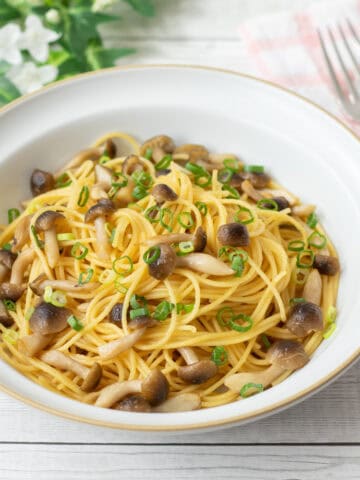
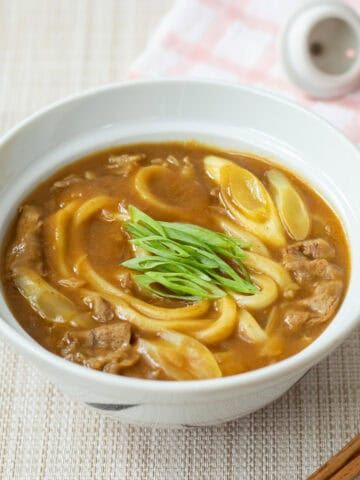
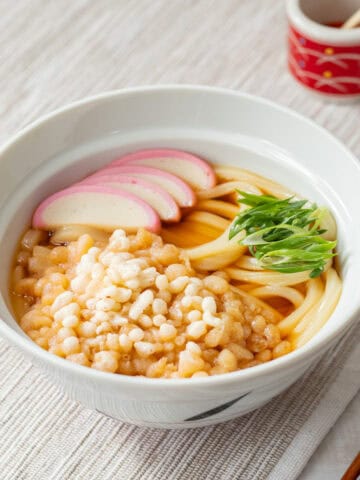
Leave a Rating and a Comment